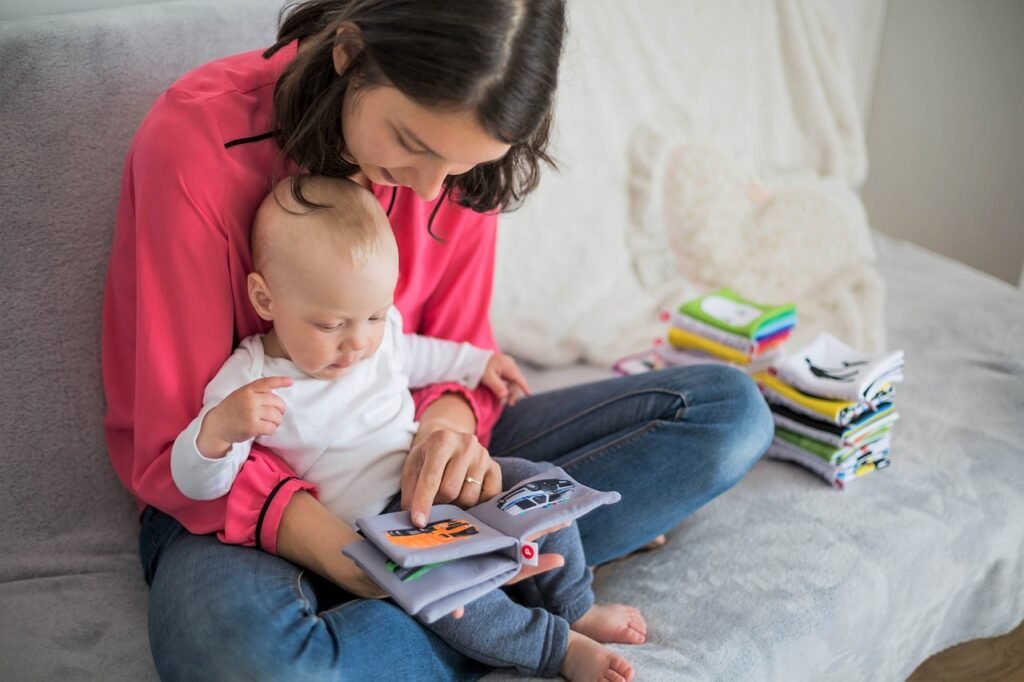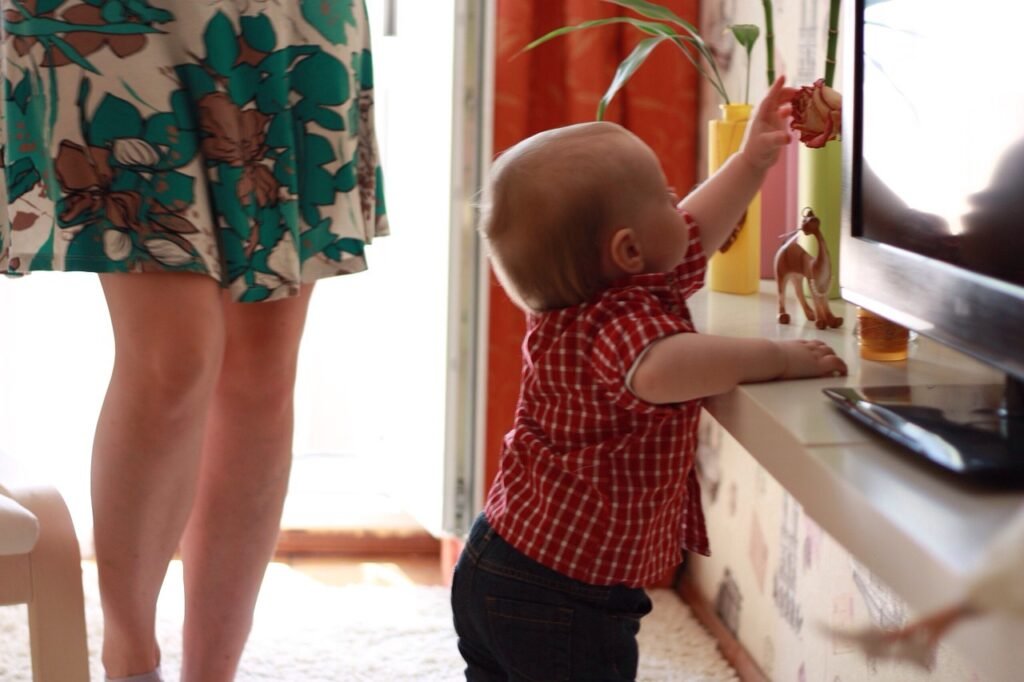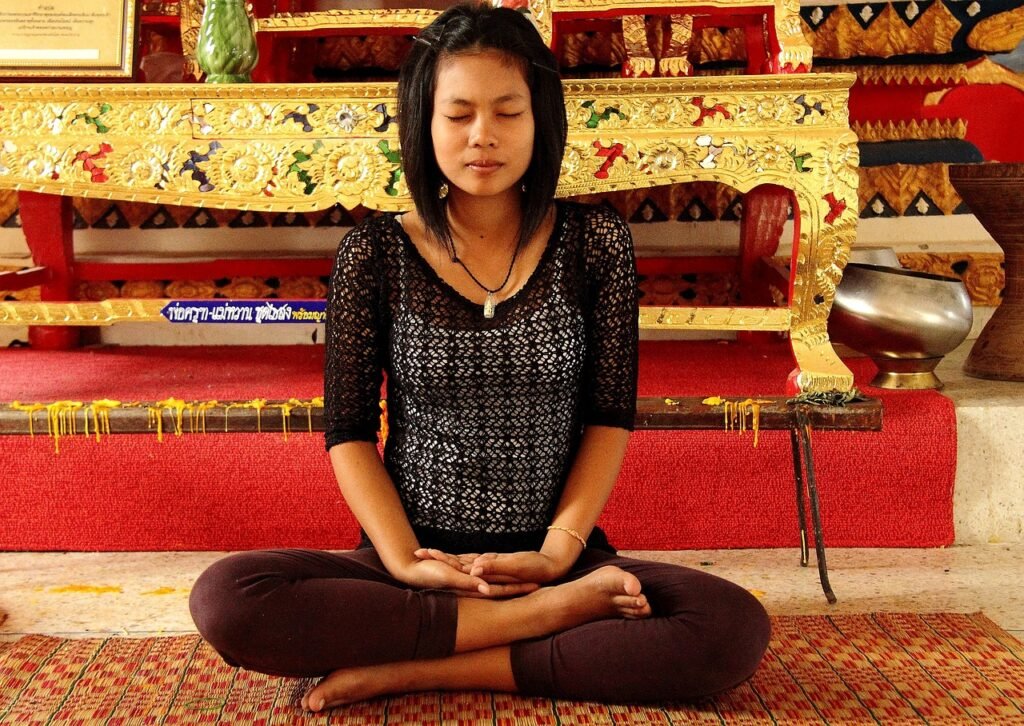
Intro
In today’s fast-paced world, finding a moment of tranquility can be challenging, especially for busy moms. However, incorporating mom meditation into your daily routine can provide numerous benefits, offering a way to reconnect with yourself and find peace amidst the chaos. The popularity of meditation has skyrocketed in recent years, with searches for yoga and meditation apps increasing by 65% year-over-year between 2019 and 2020. Additionally, in 2019 alone, 52 million users downloaded the top 10 meditation apps. These statistics highlight the growing interest and importance of meditation for individuals seeking calm and balance.
Understanding the Benefits of Meditation for Moms

Meditation offers a treasure trove of benefits, both mentally and physically, for moms navigating the often chaotic waters of parenthood.
On a mental level, meditation helps to reduce stress and anxiety by providing a quiet moment to pause, breathe, and reset.
This can lead to improved focus, emotional stability, and a more positive outlook on life.
Imagine being able to approach your day with a calm and collected mindset, even when your toddler decides that the living room wall is their new canvas.
Physically, the benefits are equally impressive.
Regular meditation practice can lower blood pressure, improve sleep quality, and even give your immune system a boost.
These physical perks are crucial for busy moms who need all the energy and resilience they can muster.
When you’re well-rested and physically balanced, you’re better equipped to tackle the demands of motherhood, from diaper changes to school runs.
Guided meditation can be a particularly effective tool for moms.
With a gentle voice leading you through each step, it becomes easier to focus and fully engage with the practice.
This can be especially helpful for beginners who might find it challenging to quiet their minds initially.
There are also specific guided meditations designed to address common concerns for moms, such as stress relief, better sleep, and mindful parenting.
By dedicating a few minutes each day to meditation, you’re investing in your well-being and, by extension, the well-being of your family.
After all, a calm mom often means a happier, more harmonious household.
And let’s face it, motherhood is a marathon, not a sprint.
A bit of daily meditation can provide the endurance needed to keep pace without feeling overwhelmed.
Creating a Meditation Space at Home

Creating a meditation space at home doesn’t require grand plans or extensive resources.
The beauty of a meditation space lies in its simplicity and personal touch.
Start with a small, quiet corner that you can claim as your own.
A comfortable cushion or chair is essential—something that supports you and allows you to sit comfortably for your daily meditation sessions.
Enhance the space with a few items that bring you peace and joy.
This could be a calming scented candle, some soft lighting, or a small plant to add a touch of nature.
The idea is to create an environment that feels inviting and serene, where you can momentarily escape from the hustle and bustle of daily life.
If you enjoy sensory elements, consider incorporating soothing sounds or soft music.
A small speaker or a white noise machine can help drown out household noises, making it easier to focus.
Personalize your space with things that resonate with you—a favorite throw blanket, a meaningful piece of art, or a family photo that brings a smile to your face.
Consistency is key to making this space a part of your routine.
By associating this corner with tranquility, you create a mental cue that it’s time to relax and meditate.
Make it a place where you feel comfortable and free from distractions.
Whether it’s five minutes or thirty, having a dedicated space can significantly enhance the quality of your meditation practice.
Involving your family in setting up this space can also be a wonderful way to introduce them to meditation.
Allowing kids to help pick out a few items or decide on the layout can make them more interested in joining you for some quiet time.
This shared experience can cultivate a peaceful atmosphere that benefits the entire household.
Finding Time for Meditation in a Busy Schedule

Finding time for meditation amidst the whirlwind of daily life can feel like an impossible task, but it’s more manageable than you might think.
Start by identifying small windows of time in your day that can be repurposed for meditation.
It doesn’t have to be a lengthy session; even five to ten minutes can make a significant difference.
Think about those moments when your child is napping, or perhaps early in the morning before the household wakes up.
Another practical approach is to integrate meditation into existing routines.
If you have a regular morning coffee or tea ritual, use that time to sit quietly and focus on your breath.
The key is to make it a seamless part of your day rather than an added chore.
You might find that you look forward to this peaceful interlude, even if it’s just a few minutes long.
Consistency is crucial.
Try to meditate at the same time each day to build a habit.
You might set a reminder on your phone or create a visual cue, like placing your meditation cushion in a visible spot.
These small steps can help establish meditation as a natural part of your daily life.
It’s also helpful to be flexible and realistic.
Some days will be busier than others, and that’s okay.
On particularly hectic days, even a few deep breaths while waiting in the school pickup line can offer a moment of calm.
The goal is to make meditation a sustainable practice that fits into your lifestyle, rather than an added source of stress.
Remember, every bit of meditation counts.
By carving out these small pockets of time, you’re making a valuable investment in your well-being, which will benefit both you and your family in the long run.
Simple Meditation Techniques for Beginners

Starting with simple meditation techniques can make the practice more approachable for beginners.
Mindfulness meditation is a great place to begin.
This technique involves focusing on your breath—inhale deeply, exhale slowly, and pay attention to how each breath feels.
Whenever your mind starts to wander, gently guide your attention back to your breathing.
It’s perfectly normal for thoughts to drift in and out; the key is to acknowledge them without judgment and refocus.
Another beginner-friendly method is loving-kindness meditation.
In this practice, you cultivate feelings of compassion and love for yourself and others.
Start by sitting comfortably, closing your eyes, and taking a few deep breaths.
Then, silently repeat phrases like “May I be happy, may I be healthy, may I be at peace.”
Gradually extend these well-wishes to others, starting with loved ones and eventually including all living beings.
This practice can be particularly uplifting and heartwarming, offering a sense of connection and emotional relief.
If you’re a mom looking to share meditation with your little one, baby meditation can be a wonderful bonding experience.
Use soft, soothing sounds or gentle rocking movements to create a calming atmosphere.
Holding your baby close while focusing on your breath can help both of you relax, promoting a peaceful environment.
Lastly, consider using body scan meditation to tune into physical sensations.
Lie down or sit comfortably and mentally scan your body from head to toe, noticing areas of tension or discomfort.
This practice can help you become more aware of your physical state and promote relaxation.
These simple techniques provide a strong foundation for anyone new to meditation, helping you gradually build confidence and deepen your practice over time.
Incorporating Meditation into Family Life

Incorporating meditation into family life can be a delightful and enriching experience.
Start by setting aside a dedicated time each day when everyone can gather for a short session.
This might be right after dinner or before bedtime, creating a calming routine that everyone can look forward to.
Begin with simple techniques like focusing on the breath or using guided meditations that are easy for kids to follow.
Even very young children can participate with short, engaging exercises.
Make it fun and interactive.
Use storytelling or imagination to keep little ones engaged—perhaps visualizing a peaceful garden or a magical journey.
Some parents find that adding gentle movements or simple yoga poses can help restless children settle into the practice.
Remember, the goal is to make this time enjoyable and pressure-free.
Another approach is to integrate mindfulness into everyday activities.
Encourage mindful eating during meals, where everyone focuses on the taste, texture, and aroma of their food.
Or try a mindful walk around the neighborhood, paying attention to the sights, sounds, and sensations along the way.
These moments can seamlessly weave mindfulness into your family’s routine without feeling forced or formal.
Involve your children in creating the meditation space.
Let them pick out a cozy blanket, a favorite stuffed animal, or a calming picture to include in the area.
This involvement can foster a sense of ownership and excitement about meditation.
Lastly, lead by example. Children learn by watching, so when they see you taking time to meditate, it reinforces the importance of the practice.
Be patient and flexible, understanding that some days will be more successful than others.
The key is consistency and creating a positive, shared experience that nurtures mindfulness and calm for the entire family.
Overcoming Common Meditation Challenges

Meditation can present unique challenges for moms, but with a bit of creativity and patience, these obstacles can be managed.
One common issue is finding a quiet moment amidst the household bustle. Instead of striving for complete silence, embrace the background noise as part of your practice.
Use it to deepen your focus rather than seeing it as a distraction.
Alternatively, noise-canceling headphones or a white noise machine can be helpful tools to create a more serene environment.
Another hurdle is dealing with a restless mind.
It’s natural for thoughts to wander during meditation, especially when you’re juggling so many responsibilities.
The key is not to judge yourself for these distractions.
Instead, gently bring your attention back to your breath or chosen focal point each time you notice your mind drifting.
Over time, this will become easier, and you’ll find that your ability to concentrate improves.
Time constraints are another significant barrier.
Busy schedules can make it seem impossible to carve out dedicated meditation time.
Remember, quality trumps quantity.
Even a few minutes of focused meditation can have substantial benefits.
Consider integrating short sessions into your daily routines, such as during your morning coffee or while waiting for your child’s extracurricular activities to finish.
Some moms struggle with the expectation of a “perfect” meditation session.
Let go of this ideal.
Meditation is a practice, not a performance.
Every session is unique, and every bit of effort counts.
Be kind to yourself, and recognize that some days will be more challenging than others.
Lastly, if you’re feeling stuck, don’t hesitate to explore guided meditations.
These can offer structure and support, making it easier to stay engaged and motivated.
Using Meditation Apps and Resources

Meditation apps can be a lifesaver for busy moms, offering guided sessions that cater to various needs and time constraints.
With more than 2,500 meditation mobile applications launched since 2015, there’s undoubtedly something to fit everyone’s preferences.
These apps often provide specific meditations focused on stress relief, improving sleep, and mindful parenting—perfect for the challenges moms face daily.
One of the great advantages of meditation apps is their flexibility.
Whether you have just a few minutes while your baby naps or can dedicate a longer period after bedtime, you can find a session that fits your schedule.
Many apps also include features like progress tracking and reminders to help you stay consistent with your practice.
The widespread use and effectiveness of these apps are evident.
The top 10 meditation mobile applications have generated a revenue of $195 million, illustrating their popularity.
Meditation apps are also the most purchased health app category in the US, accounting for 34% of the most purchased types of healthcare apps.
For moms new to meditation, apps can offer an accessible entry point.
With guided instructions and soothing voices leading you through each session, they remove the guesswork and help you fully engage with the practice.
Whether you’re looking to reduce stress, enhance sleep, or simply carve out a moment of peace in your day, meditation apps can be a valuable tool to support your well-being.
Real-Life Examples from Moms Who Meditate

Real-life stories from fellow moms can offer a comforting sense of community and shared experience.
Take Sarah, a mother of two, who starts her day with a quick five-minute meditation before the kids wake up.
She swears by this brief moment of solitude to center herself and set a positive tone for the day.
Sarah’s strategy is simple but effective, demonstrating that even the shortest meditative practice can have a profound impact.
Then there’s Maria, who incorporates meditation into her evening routine.
After tucking her children into bed, she spends ten minutes using a guided meditation app to wind down.
This practice not only helps her relax but also improves her sleep quality, making her more refreshed and ready for the next day’s challenges.
Emily, a working mom, found a creative way to meditate during her lunch breaks.
She heads to a nearby park, finds a quiet bench, and focuses on her breath for ten minutes.
This mid-day reset allows her to return to work with a clear mind and renewed energy.
For Jessica, meditation has become a family affair.
She sets aside time each weekend for a group meditation session with her children.
Using simple techniques like deep breathing and visualizing peaceful scenes, they all benefit from this shared, calming activity.
It’s a beautiful way to introduce mindfulness to her kids while also nurturing her own practice.
These real-life examples show that meditation can be seamlessly integrated into various aspects of daily life, no matter how busy it gets.
Whether it’s a solo morning ritual or a family bonding activity, there’s a way to make it work for you.
Tips for Long-Term Meditation Success

Building a lasting meditation practice takes a blend of patience, flexibility, and intention.
Start by setting realistic expectations—understand that it’s okay to have days when meditation feels easier and days when it’s more challenging.
Celebrate your progress, no matter how small, to keep yourself motivated.
It’s also helpful to integrate meditation into your daily routine in a way that feels natural, such as during morning coffee or bedtime.
Experimenting with different techniques can keep your practice fresh and engaging.
If you’re using an app, try exploring various guided sessions or switching up the focus from stress relief to mindfulness or loving-kindness meditation.
Joining a meditation group or online community can offer valuable support and accountability, making it easier to stay committed.
Finally, be kind to yourself.
Recognize that every moment you spend meditating is a step toward better mental and physical health.
Allow yourself the flexibility to adapt your practice as your schedule and needs change.
With time and persistence, meditation can become a deeply ingrained and rewarding part of your life, supporting your well-being and enhancing your ability to care for your family.
